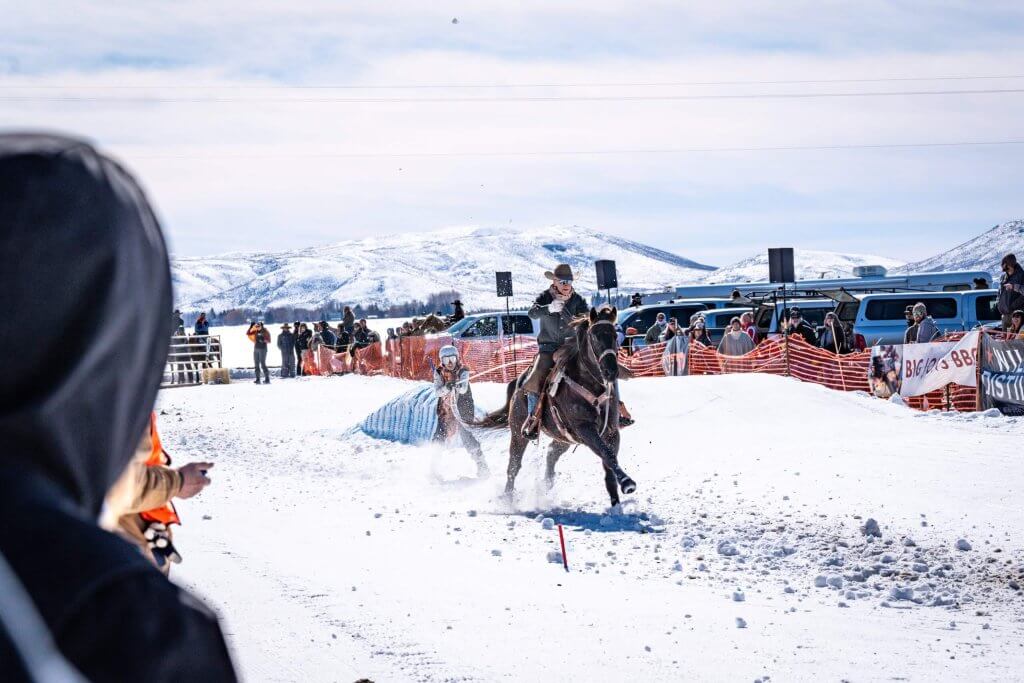This is a sponsored post.
It is a bit of an unspoken rule with backcountry skiing that you don’t widely discuss the tales of your travels, especially when they are tales of good fortune and amazing snow. So it is with careful trepidation I begin this story; bestowing knowledge of a dreamlike world to a certain few who chase the wild places in winter.
If you are new to backcountry skiing or snowboarding, it is imperative you first choose a qualified guide to show you the ropes. Even if you are an accomplished skier or boarder at ski resorts, the backcountry presents an entirely different set of challenges and hazards. This is wild, untamed nature at its finest: the same elements that beckon us to explore also have the power to humble us and remind us of our insignificance. Not to mention, the guides know the spots that best maximize safety and fun, ensuring that your frustration-to-satisfaction ratio stays relatively low.
1. McCall
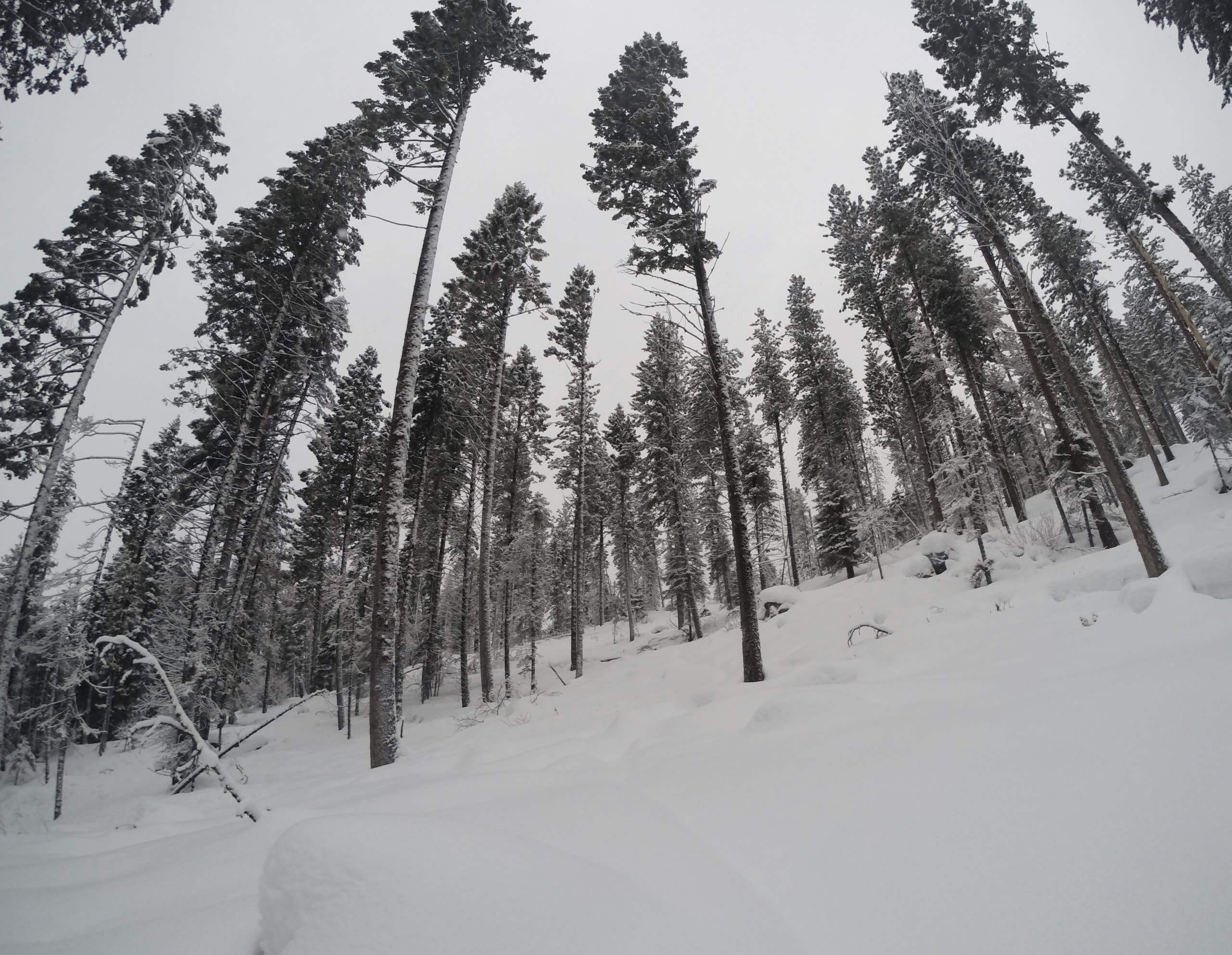
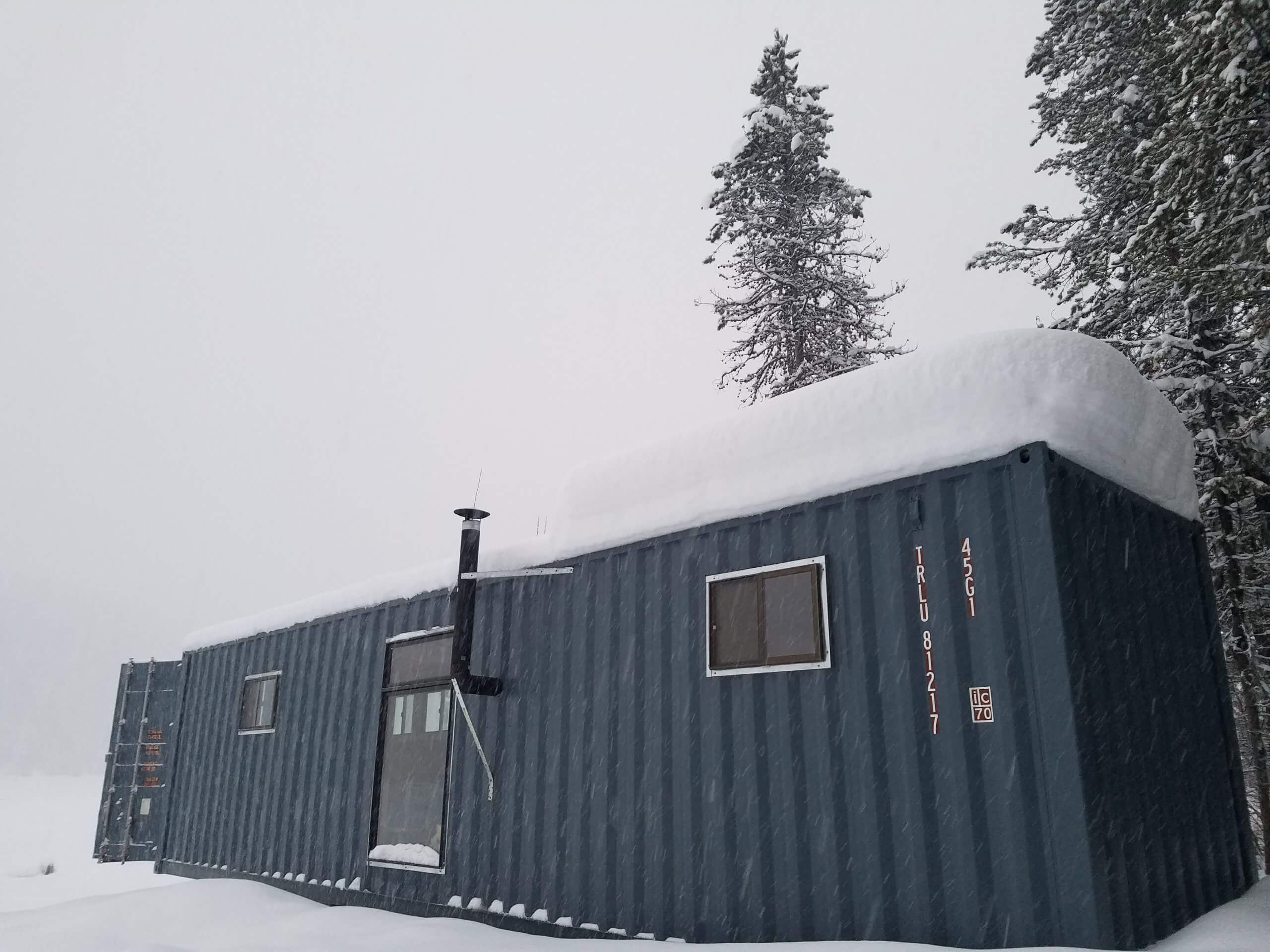
The wilderness around McCall offers endless opportunities for winter adventure. The light, soft snow falls in copious amounts, with nearby ski resort Brundage Mountain Resort boasting “The Best Snow in Idaho”. The resort is but one side of one mountain amongst too many other mountains to count, most of them within the boundaries of state and federally protected public land.
Just south of McCall is Jug Mountain Ranch. Here, the Carey family has turned the mountainside property into a four season recreation paradise. On this trip, I took the Mainline Trail to the Alpine Cabin, located next to Jug Mountain Reservoir. This spot was an ideal hideaway to access amazing terrain just out the back door and across the frozen lake. When I arrived, it was snowing hard and didn’t stop all night. Luckily the kind folks at Jug Mountain Ranch had brought in water, dry wood, and kindling by snowmobile to make sure I was cozy for my overnight stay.
I woke to 12 new inches of the famous McCall snow. It was the perfect way to start a week and a half long trip in the heart of Idaho.
That morning, I crossed the reservoir to find a full view of long slopes that led right back to the frozen lake. The climb was easy enough, never lasting more than a half hour, but of course it’s the ride down we all seek. With so much new snow, I could go anywhere in the trees, over rocks, and in big open slopes for a feeling that is as close to floating as is humanly possible. That was just one corner of the reservoir too. I never made it all the way up Jug Mountain because of weather, but even with the cloudy layer, there were still more options than I had time for on this trip.
Jug Mountain Ranch is just one of the backcountry options in the vast wilderness surrounding McCall. If you want to tap into some of the best local knowledge available, check out Payette Powder Guides, who can show you around a virtually unlimited amount of terrain for any ability level. If you want to get really deep in the wilderness you can also book a night at their yurt, but be advised this is popular so you’ll want to reserve your stay in advance.
2. Stanley
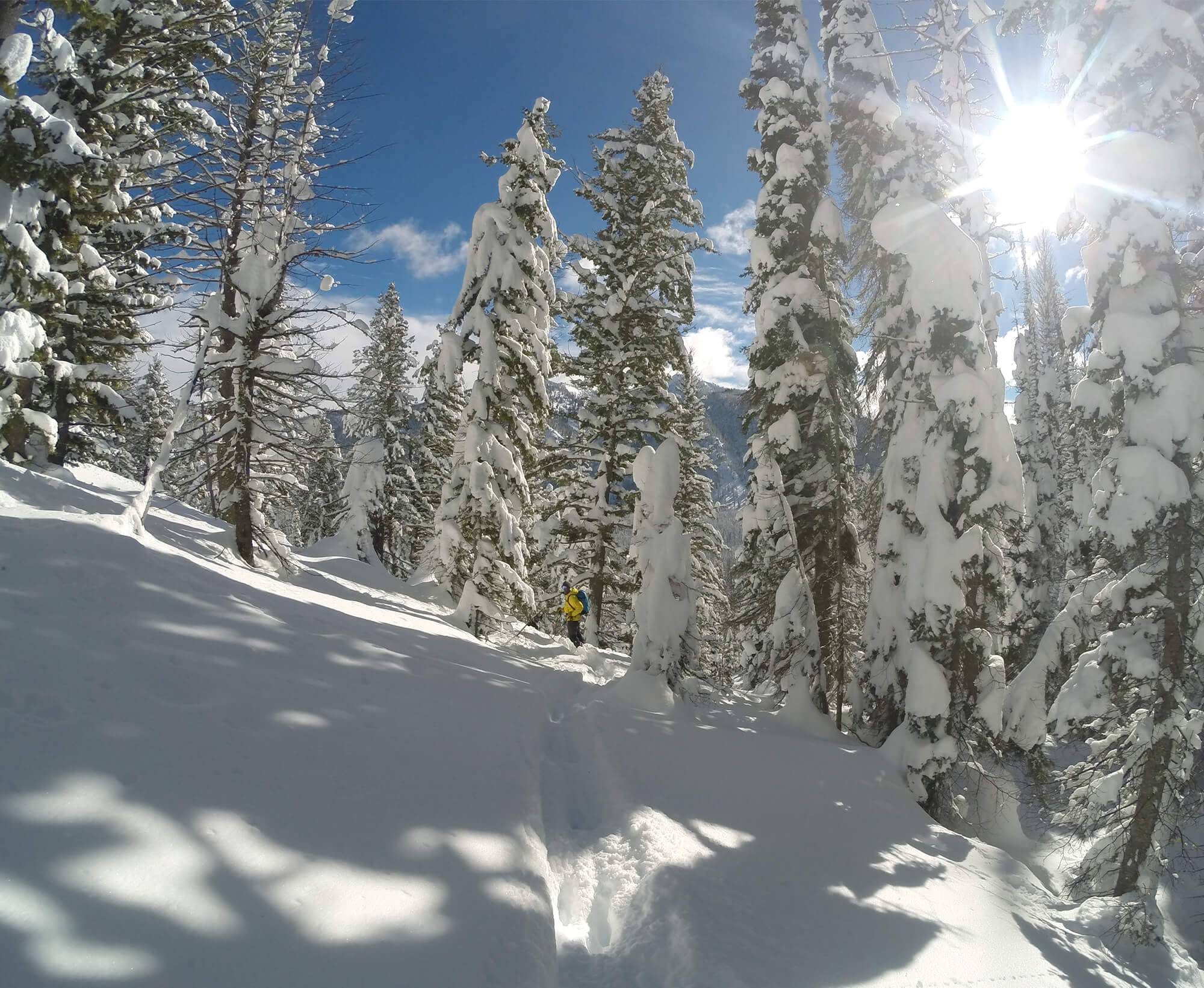
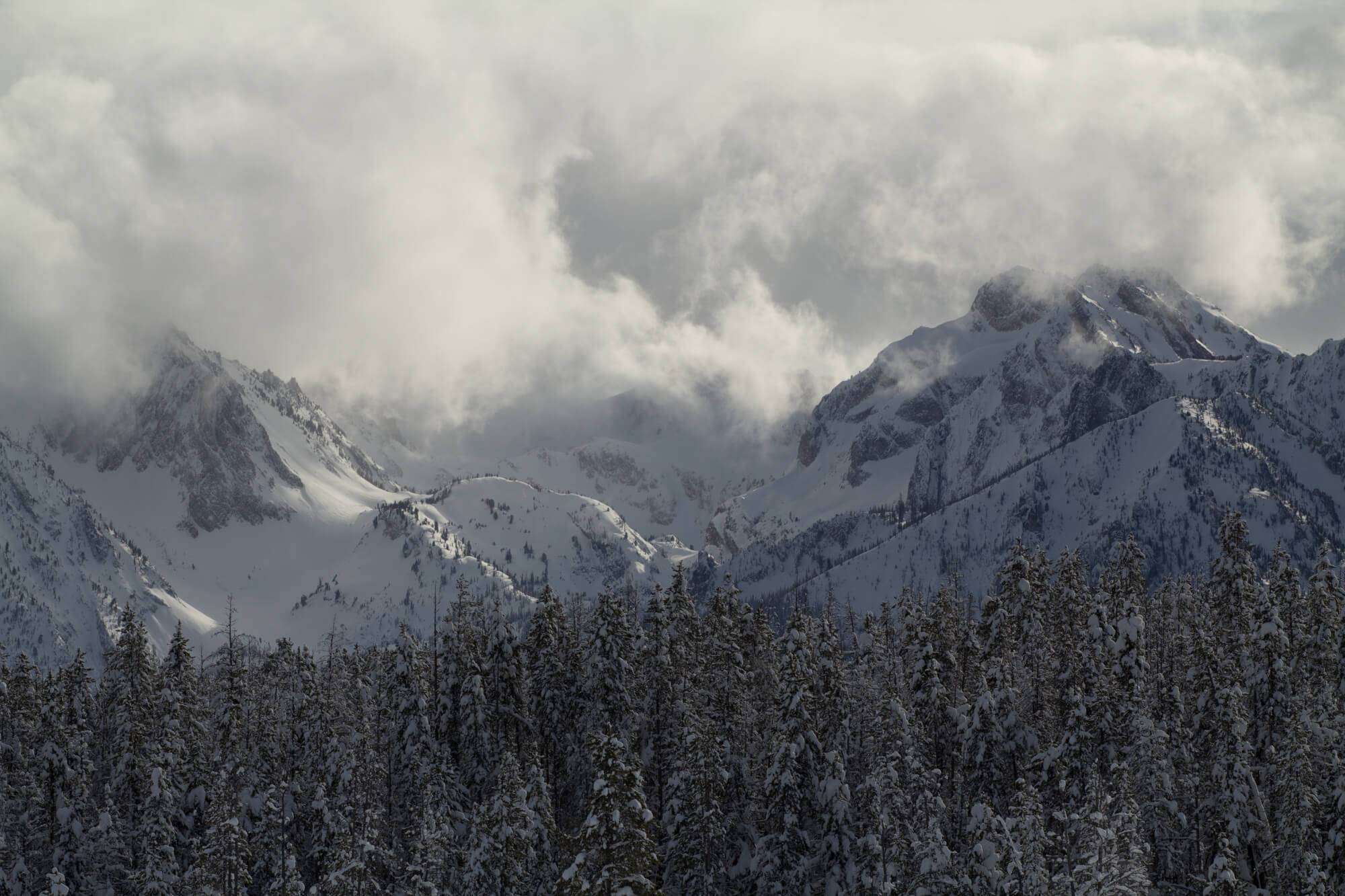
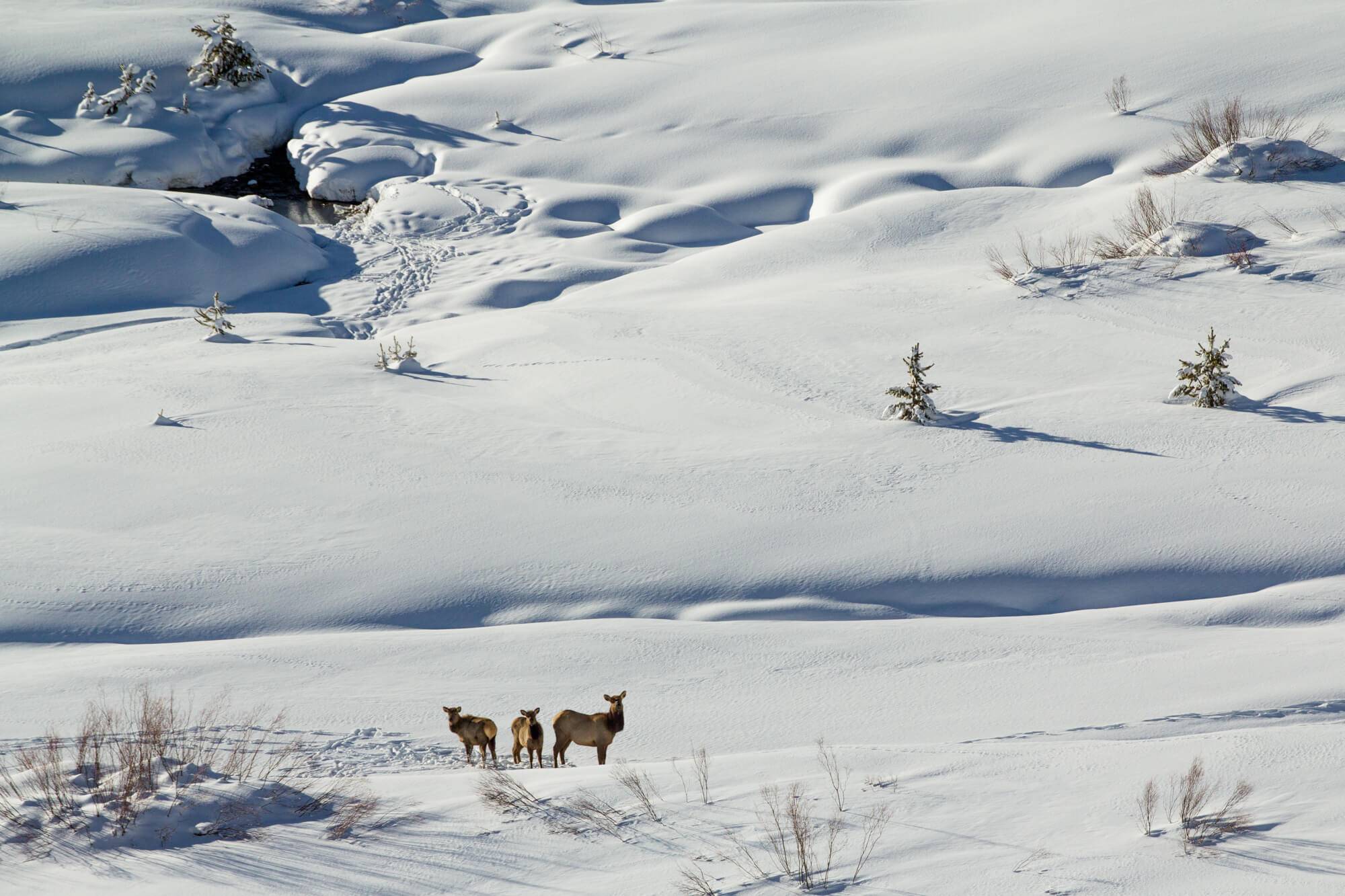
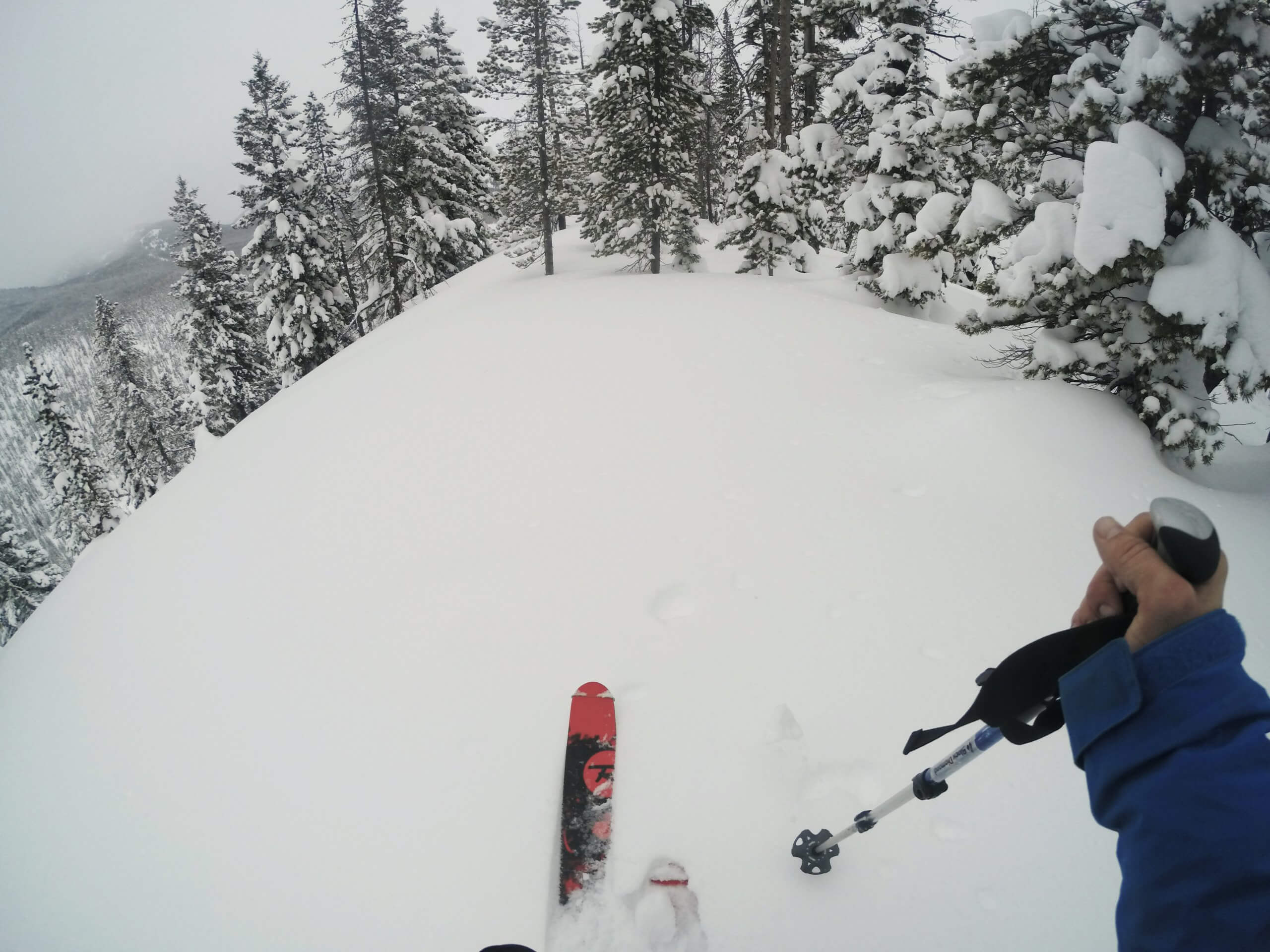
On a map, the distance between McCall and Stanley doesn’t appear too far, as the two towns are only 76 miles apart as the crow flies. As the Wandervan drives however, the journey is double that: 156 miles. On this drive, you’ll see some of the most impressive mountain scenery in the entire United States – the Sawtooth National Forest. This area is a nature lover’s fantasy of unspoiled wilderness with some of the most unique looking mountains in the country.
While many may not know about the accessible terrain and light, consistent snow that falls here, one man is an expert on the topic, Chris Lundy. Lundy owns Sawtooth Mountain Guides and he’s dedicated to showing people the magic that exists in the mountains. I was fortunate enough to have him show me some of that magic and I’ll say that anyone would be hard-pressed to find a better scenario.
No crowds, light, dry snow, long sustained pitches, and the sun even came out to say hello. This was the type of experience that people pay big money for and here in Idaho, it was accessible from the highway just a few minutes outside of Stanley. The trees were well spaced to allow for some of the finest tree skiing I’ve experienced all season. The terrain was safe enough to accommodate even intermediate skiers, but plenty of advanced terrain could be found if you wanted to go a bit higher.
We didn’t see another soul all day and had a mountain all to ourselves. In a place where the ski runs outnumber people, you can truly get away from any distractions and learn to love, and even crave, silence and solitude. With so many runs available from the highway, adventurers will have plenty of time to enjoy the day without needing to work too hard to get there.
3. Sun Valley

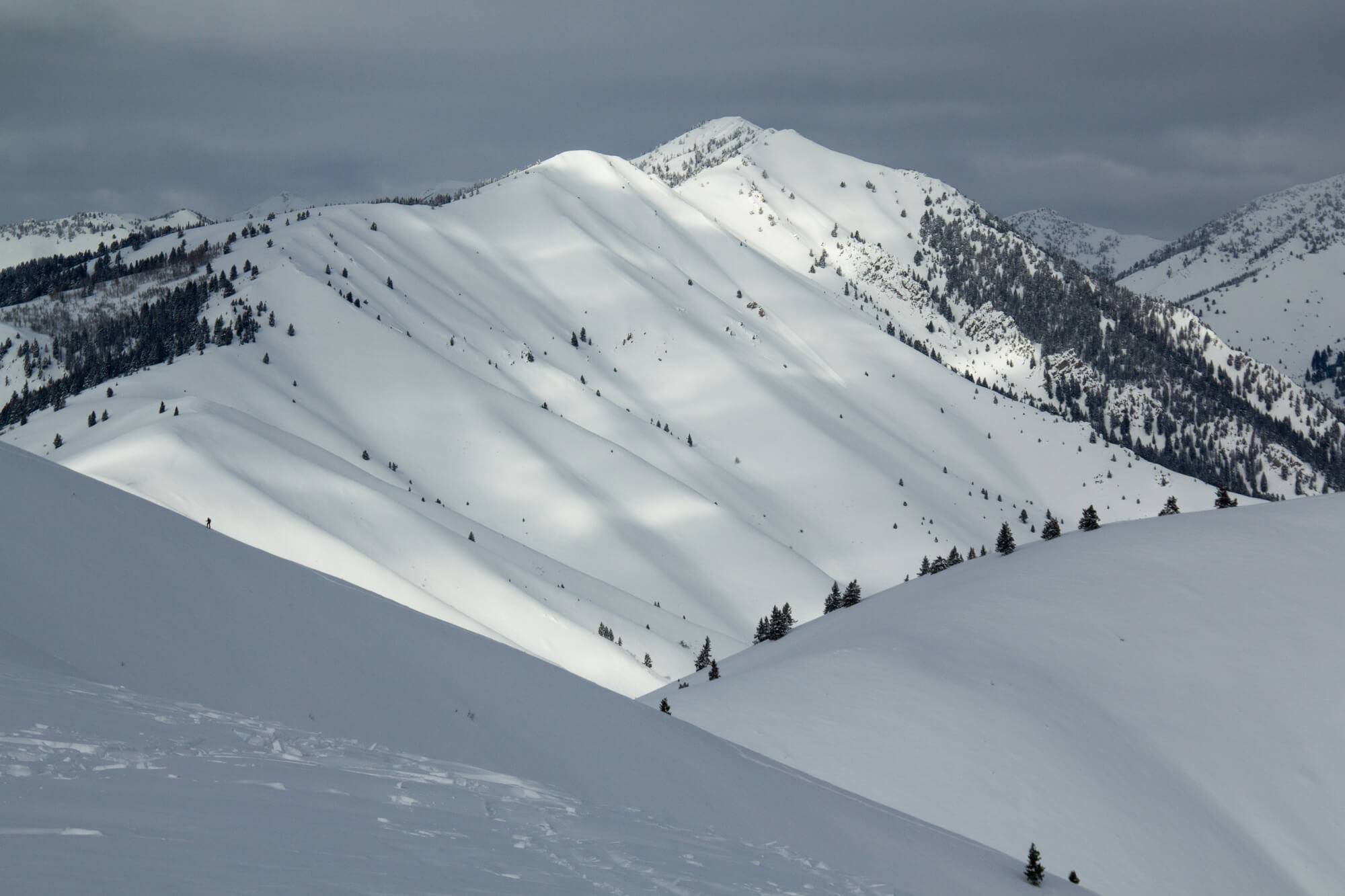
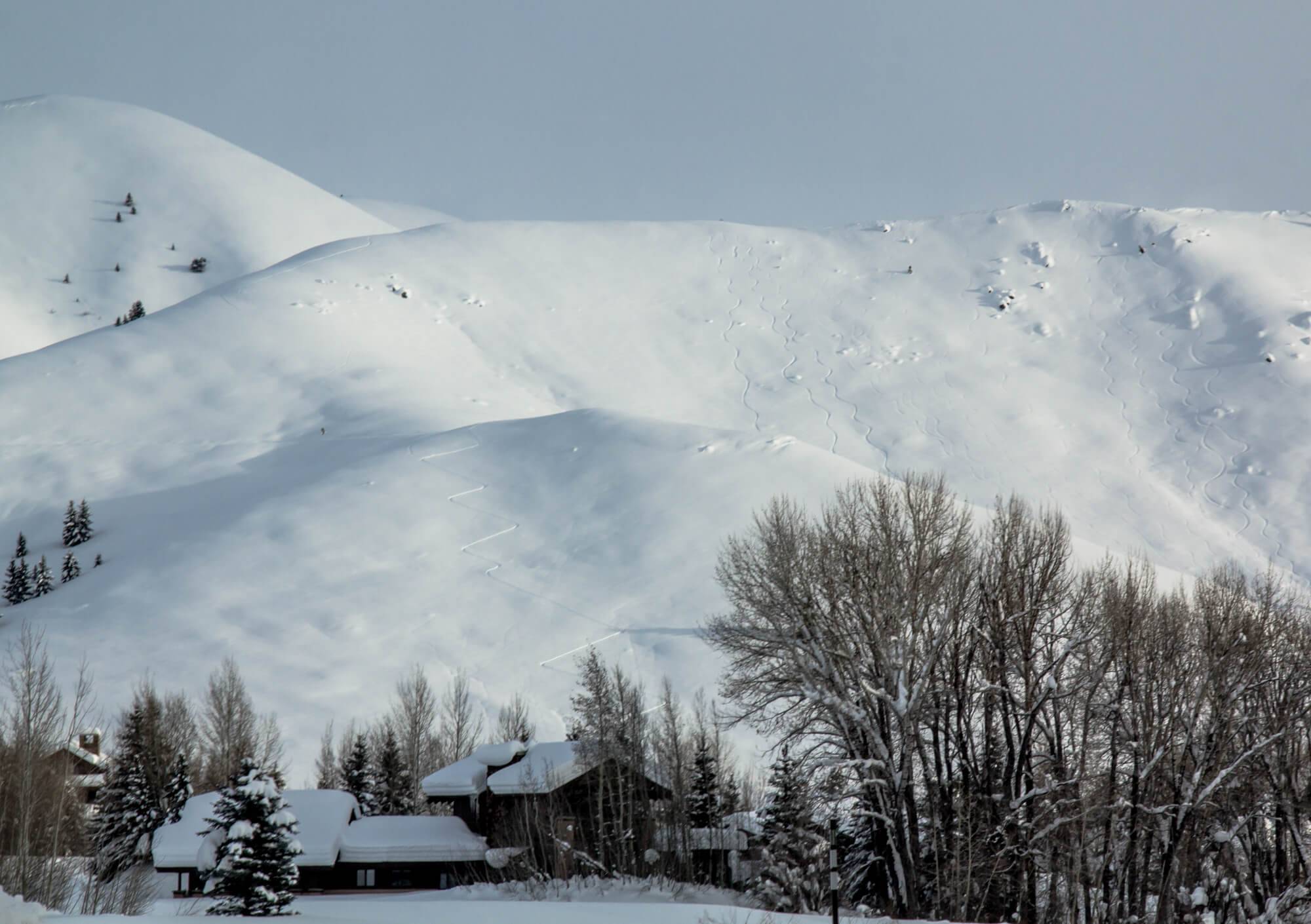
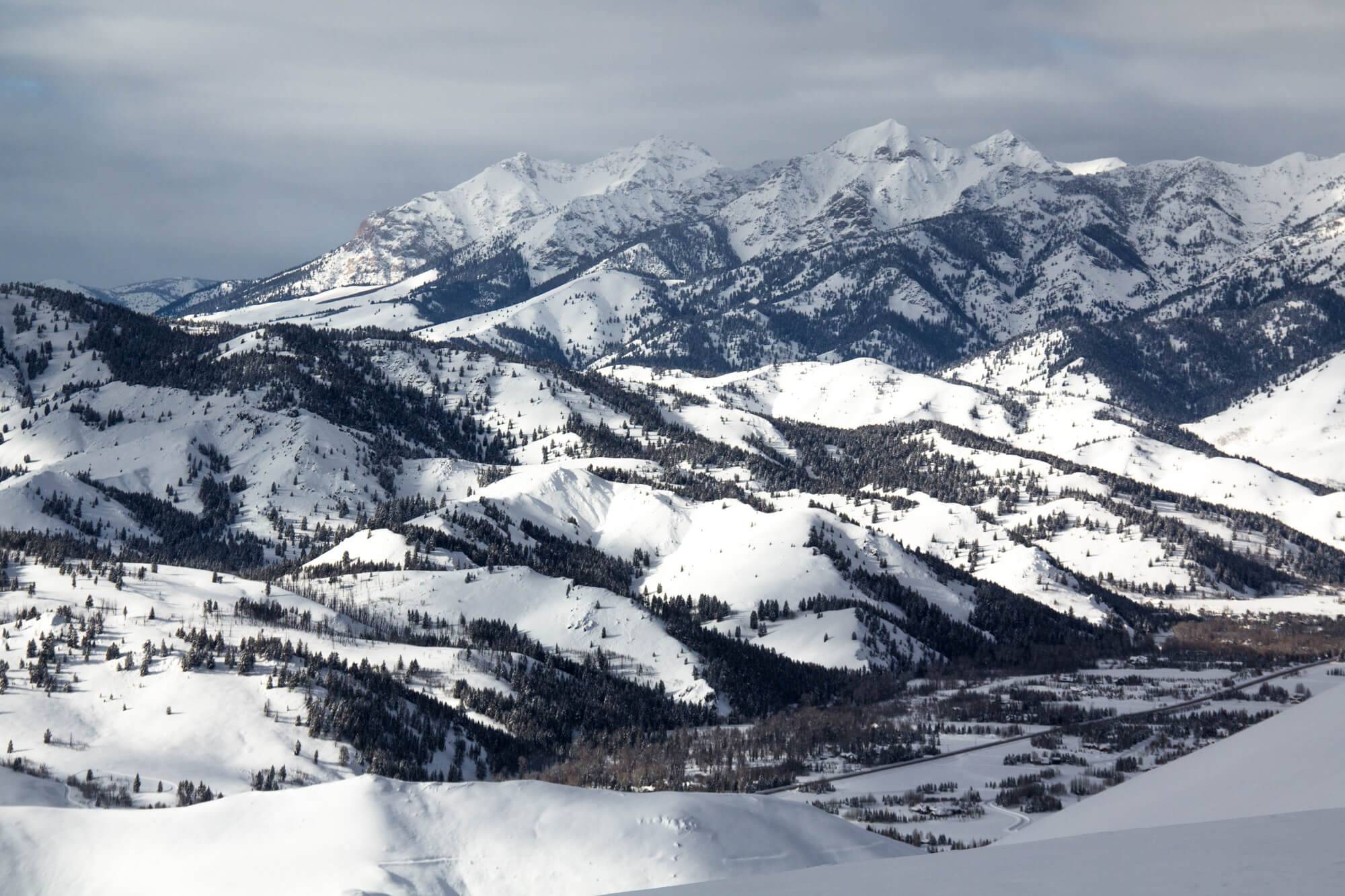
Driving south from Stanley I headed to Sun Valley. I first had to go over Galena Pass, which is undoubtedly one of the most exciting drives in Idaho for lovers of backcountry skiing. Plenty of cars were parked alongside the road, and surely their owners were out enjoying sliding down these towering monstrosities from every direction. Sawtooth Mountain Guides also shows skiers around this playground, but as time was short I took mental pictures at every turn knowing that someday I would be back to spend time in the pass.
Sun Valley itself has a rich history of skiing; being the first ski resort in North America and now one of the most famous ski destinations in the world. But the other mountains in the valley vastly outnumber the mountains that host chairlifts. Indeed this area is as good as it gets in terms of snow quality, accessibility, and varied terrain.
If you head north from Ketchum on Highway 75 you will find multiple pullouts along the way and a track where some eager locals were probably heading out at daybreak. This area is within the Sawtooth National Forest and is public land for all to enjoy. As long as you maintain a view of the highway it’s pretty hard to get lost. But as with any backcountry trip, make sure you are well prepared with a headlamp and some extra food in case you decide to maximize your day because you just had too much fun.
After a week of exploring Idaho’s backcountry options, my trip came to a close and I made my way back to Boise with a renewed sense of excitement: not only for what I had just experienced but also for the possibility of many more backcountry ski outings to come. Backcountry skiing in Idaho is an underrated activity, and many are happy with this fact. But with such a vast expanse of mountainous terrain, there is room for many others to explore this resource we all share.
All photos, including feature image, are credited to Steven Andrews.
Steven Andrews uses multiple mediums to share stories, whether through written or spoken word, or visual imagery. Steve enjoys exploring the world while interacting with nature and exploring diverse lands. He loves Idaho for its world-class outdoor activities, friendly people, and easy-going lifestyle. You can find more of his tales at whererusteve.com or on Instagram @whererusteve.
Published on March 28, 2017



